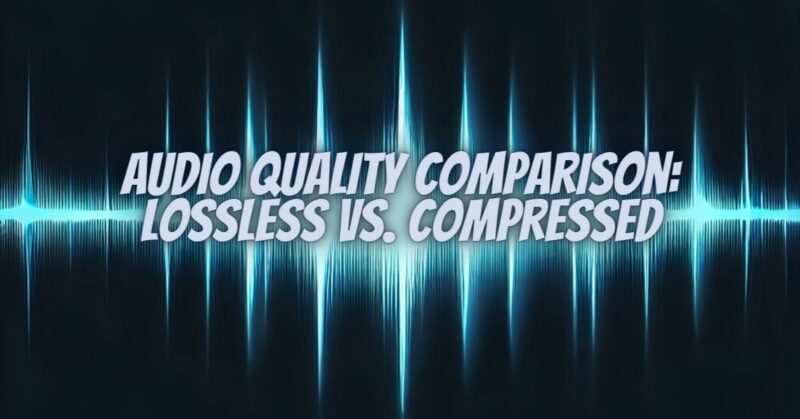When it comes to digital audio, the choice between lossless and compressed formats is a fundamental consideration. Each offers its own set of advantages and trade-offs, with a significant impact on audio quality. In this article, we’ll explore the key differences between lossless and compressed audio formats to help you make informed choices for your audio needs.
Lossless Audio
Lossless audio formats are designed to maintain the full fidelity of the original recording. Here are the primary characteristics of lossless audio:
- Uncompromised Quality: Lossless audio formats preserve every detail of the original audio signal, resulting in audio quality that is identical to the source.
- Bit Depth and Sample Rate: Lossless formats often use high bit depths (e.g., 16-bit, 24-bit) and sample rates (e.g., 44.1 kHz, 96 kHz) to capture a wide dynamic range and high-frequency content.
- Popular Formats: Common lossless audio formats include FLAC (Free Lossless Audio Codec), ALAC (Apple Lossless Audio Codec), and WAV (Waveform Audio File Format).
- Audio Fidelity: Lossless audio is favored by audiophiles and professionals who prioritize audio quality above all else. It’s ideal for critical listening and archiving music collections.
- Large File Sizes: Lossless audio files are significantly larger than compressed formats, which may pose challenges in terms of storage capacity and streaming bandwidth.
Compressed Audio
Compressed audio formats, as the name suggests, use compression techniques to reduce file sizes. Here are the primary characteristics of compressed audio:
- Reduced File Size: Compression algorithms remove redundant or unnecessary audio data, resulting in much smaller file sizes compared to lossless formats.
- Loss of Data: Compression inherently involves data loss. While advanced algorithms aim to minimize perceptual loss, some audio information is sacrificed to achieve smaller file sizes.
- Common Formats: Popular compressed audio formats include MP3 (MPEG Audio Layer-3), AAC (Advanced Audio Coding), and OGG (Ogg Vorbis).
- Widespread Use: Compressed audio is ubiquitous in online streaming, digital music libraries, and portable devices due to its small file sizes and efficient streaming.
- Acceptable Quality: Many listeners find compressed audio quality to be acceptable for everyday listening, especially when using lower-quality playback equipment.
Audio Quality Comparison
The choice between lossless and compressed audio depends on your specific needs and priorities:
1. Critical Listening: If you are an audiophile, musician, or audio professional who demands the highest audio fidelity, lossless audio is the clear choice. It ensures that you hear every detail and nuance in your music collection.
2. Storage Constraints: If you have limited storage space and need to store a large music library, compressed audio formats are more practical due to their significantly smaller file sizes.
3. Portability: Compressed audio is ideal for portable devices and streaming platforms where storage and bandwidth considerations are crucial. You can enjoy music on the go without consuming excessive data.
4. Casual Listening: For everyday listening on standard headphones or speakers, compressed audio formats like MP3 or AAC are often more than sufficient. The difference in audio quality may not be noticeable in casual listening environments.
5. Archiving: If you’re archiving your music collection for long-term preservation, lossless formats are the preferred choice. They ensure that your music remains in pristine condition over time.
The choice between lossless and compressed audio ultimately depends on your individual needs and preferences. Consider your listening environment, storage constraints, and the quality of your playback equipment when making your decision. Whether you prioritize uncompromised audio fidelity or practicality, both formats have a place in the world of digital audio, catering to a wide range of audio enthusiasts and consumers.

